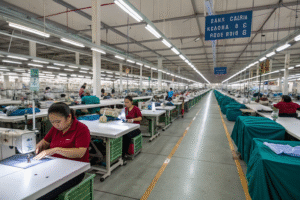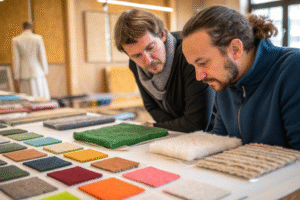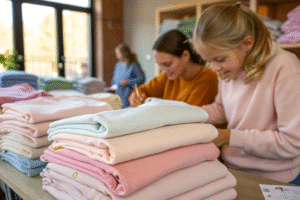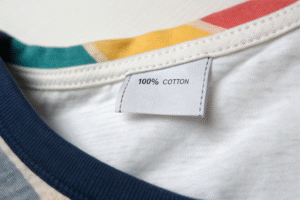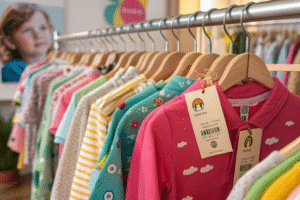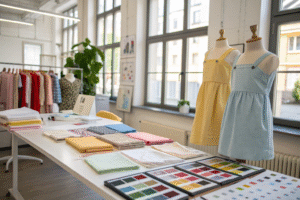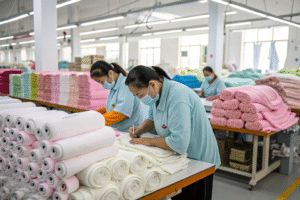Sustainability is no longer just a trend in the fashion industry — it’s an expectation. Parents today are not only looking for stylish and comfortable clothes for their children, but they also want products that are eco-friendly. As a children’s clothing manufacturer, I’ve seen growing interest in recycled materials such as recycled polyester, nylon, and blended fabrics. But one common question from brand owners and buyers is: Are recycled materials actually durable enough for kids wear?
The answer is yes — when sourced and processed correctly, recycled materials can be just as strong and long-lasting as virgin fabrics. Let’s break down why they work, how they compare to traditional materials, and what to consider before using them in your children’s apparel line.
Understanding Recycled Fabrics in Kids Wear
Recycled fabrics are made by repurposing existing materials — often post-consumer waste like PET bottles, discarded textiles, or fishing nets — into new fibers. These are then spun and woven into new fabric suitable for kids clothing.

What types of recycled materials are common in kids wear?
Popular options include:
- Recycled Polyester (rPET): Made from plastic bottles.
- Recycled Nylon: Often sourced from fishing nets and industrial waste.
- Recycled Cotton: Created from textile waste or post-consumer garments.
For more details, visit Textile Exchange’s recycled materials guide.
Why are they considered eco-friendly?
They reduce reliance on virgin raw materials, cut down landfill waste, and require less energy in production. Certifications like Global Recycled Standard (GRS) verify sustainable sourcing and production.
Durability Compared to Virgin Materials
When properly processed, recycled fibers can be as durable as virgin fibers. The key is in the quality of raw material and spinning technology.

How does recycled polyester hold up in kids wear?
Recycled polyester is strong, resistant to stretching and shrinking, and holds color well. Brands like Patagonia have proven it works even in outdoor kidswear.
Are there any durability concerns?
Lower-grade recycled fibers can be weaker, especially if made from poor-quality waste. This is why partnering with certified suppliers is essential to ensure consistent fabric strength.
Comfort and Wearability for Children
Durability is only part of the equation — kids clothes must also be soft, breathable, and comfortable.

Are recycled fabrics comfortable for sensitive skin?
High-quality recycled fibers can be spun into soft yarns comparable to cotton or virgin polyester. Many are blended with organic cotton for added softness, as recommended by OEKO-TEX certified suppliers.
Do recycled fabrics affect garment weight or feel?
Not necessarily. Modern processing can create lightweight, breathable fabrics ideal for active children.
Tips for Using Recycled Fabrics in Kids Wear
To make the most of recycled materials, brands need to balance sustainability goals with practicality.

How can brands ensure quality?
- Choose GRS-certified suppliers.
- Request durability testing for abrasion, colorfastness, and shrinkage.
- Use fabric blends to enhance softness and stretch.
Should recycled fabrics be used for all kidswear?
They work best in categories like T-shirts, hoodies, jackets, and sportswear. For items needing extra softness (like newborn wear), consider blending with organic cotton.
Conclusion
Recycled materials can absolutely be durable for kids wear — as long as they’re sourced from reputable suppliers and tested for strength and comfort. They offer a win-win for brands: meeting eco-conscious consumer demands while delivering quality apparel.
If you want to integrate high-quality recycled fabrics into your children’s clothing line, contact our Business Director Elaine at elaine@fumaoclothing.com. At Shanghai Fumao, we specialize in producing sustainable, durable, and stylish kidswear that stands up to playtime and repeated washes.


